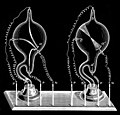File:PSM V39 D650 Vacuum tubes.jpg

Size of this preview: 627 × 600 pixels. Other resolutions: 251 × 240 pixels | 502 × 480 pixels | 803 × 768 pixels | 1,071 × 1,024 pixels | 1,467 × 1,403 pixels.
Original file (1,467 × 1,403 pixels, file size: 302 KB, MIME type: image/jpeg)
File history
Click on a date/time to view the file as it appeared at that time.
| Date/Time | Thumbnail | Dimensions | User | Comment | |
|---|---|---|---|---|---|
| current | 16:43, 29 November 2010 |  | 1,467 × 1,403 (302 KB) | Ineuw | {{Information |Description = Vacuum tubes |Source = http://en.wikisource.org/wiki/Page:Popular_Science_Monthly_Volume_39.djvu/650 |Date = 1891 |Author = Unknown |Permission = {{PD-old}} |other_versions = }} {{Retouc |
| 20:47, 27 November 2010 |  | 1,467 × 1,403 (312 KB) | Ineuw | {{Information |Description = Vacuum tubes |Source = http://en.wikisource.org/wiki/Page:Popular_Science_Monthly_Volume_39.djvu/650 |Date = 1891 |Author = Unknown |Permission = {{PD-old}} |other_versions = }} {{Retouc |
File usage
The following 2 pages use this file: